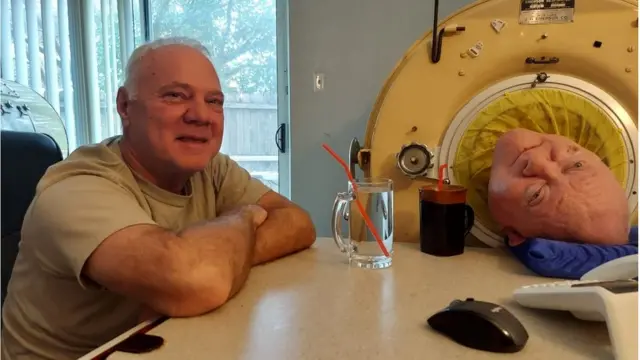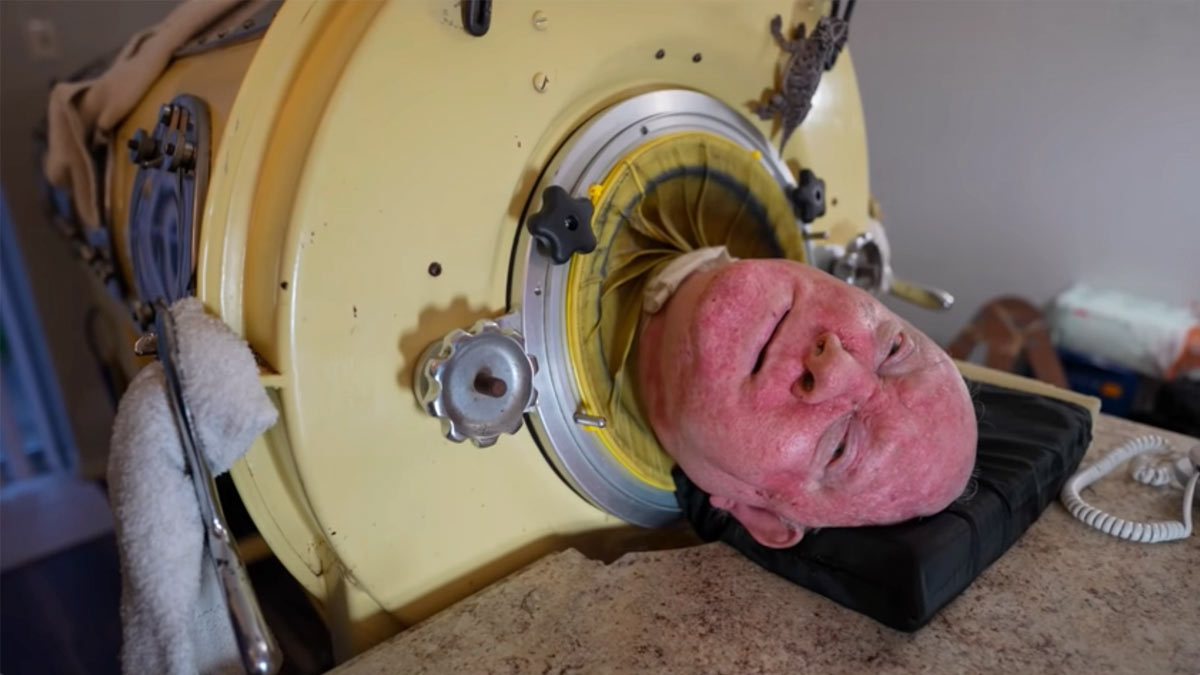Paul Alexander, often referred to as “The Man in the Iron Lung,” lived a life of extraordinary resilience and achievement despite being confined for decades to a mechanical respirator. Diagnosed with poliomyelitis in 1952 at the age of six, Alexander became one of the last people in the world dependent on an iron lung—a device developed in the late 1920s to help polio patients breathe.
Until his passing in March 2024, Alexander’s story served as a powerful reminder of human endurance, medical innovation, and the far-reaching impacts of vaccine-preventable diseases.
Early Life and Diagnosis

Paul Alexander was born in 1946 and raised in a suburb of Dallas, Texas. Like many children of his time, he led an active, healthy life—until a sudden illness changed everything. In the summer of 1952, Paul began experiencing symptoms that included fatigue, fever, and difficulty breathing. These were classic signs of poliomyelitis, a highly infectious viral disease that can affect the spinal cord, causing muscle weakness and paralysis.
According to the CDC, the 1952 polio epidemic was the worst in U.S. history, with nearly 58,000 cases reported and over 3,000 deaths. Thousands were left with permanent disabilities. Paul was among the most severely affected.
After being taken to the hospital, he quickly lost the ability to breathe on his own. A tracheotomy was performed, and he was placed inside an iron lung—a large cylindrical ventilator that used negative pressure to facilitate breathing.
Life in the Iron Lung

Waking up inside the iron lung was disorienting for the young boy. He later recalled in interviews, including one with As It Happens on CBC Radio, how frightening it was to regain consciousness, unable to move or speak. At the time, hospitals were filled with rows of iron lungs, each occupied by children struggling with the effects of polio.
The iron lung, also known as the “Drinker respirator” (named after its inventor, Philip Drinker), was the first widely used machine to support breathing. It functioned by creating a vacuum around the chest, expanding and contracting it to mimic natural breathing.
Paul spent 18 months in the device during his initial recovery and continued to rely on it for most of his life.
A Determined Pursuit of Education
Despite these physical limitations, Paul was determined to pursue education and independence. With the help of a dedicated therapist, he learned to use a technique called “frog breathing” (glossopharyngeal breathing), which allowed him to spend short periods outside the iron lung. He gradually increased his capacity to function with minimal assistance.
At age 21, Paul became the first person to graduate from a Dallas high school without attending in person. He completed his coursework from home and graduated with honors.
After initially being denied admission to college due to his condition, Paul was eventually accepted to Southern Methodist University under the condition that he receive the polio vaccine and have a fraternity assist with his daily needs. He later transferred to the University of Texas at Austin, where he earned a law degree and passed the bar exam.

Legal Career and Advocacy
Paul went on to build a successful legal career in the Dallas-Fort Worth area, practicing law for over 30 years. He represented clients in court, conducted legal research, and continued his education—all from his customized setup that accommodated his iron lung.
His legal career was marked by resilience and intellect. In interviews, he described himself as “a pretty damn good lawyer,” proud of what he had achieved against immense odds.
Paul also dedicated time to writing. He authored a memoir titled Three Minutes for a Dog, which he typed using a pen attached to a stick.

A Life of Innovation and Adaptation
Despite advances in medical technology, Paul chose to remain in his original iron lung, citing comfort and familiarity. The machines, which ceased production in the 1960s, are now rare. Paul relied on parts salvaged from old machines found in barns, garages, and antique shops.
In 2016, he made a public plea on YouTube for spare parts when his iron lung began to fail. This drew attention from engineers and hobbyists interested in preserving old technology. They volunteered their time to help keep his iron lung functional.
According to a profile by Gizmodo, Paul was likely among the last individuals in the world still using this type of device full-time. Modern ventilators have replaced iron lungs for most patients requiring mechanical respiratory support.

Polio Today
Thanks to the introduction of the polio vaccine in 1955, cases of poliomyelitis in the United States declined sharply. According to the CDC, the U.S. has been polio-free since 1979. However, vaccine-derived polio cases occasionally appear in under-immunized communities, reminding public health officials that vigilance is still necessary.
The Global Polio Eradication Initiative, led by the World Health Organization (WHO), continues to work toward the worldwide elimination of the disease.

Paul Alexander’s Passing and Legacy
Paul Alexander passed away in March 2024. His brother, Philip Alexander, confirmed the news and shared that Paul died peacefully after a lifetime of extraordinary perseverance. In an interview with the BBC, Philip described him as a “welcoming, warm person” with a “big smile” who made everyone feel at ease.
“To me, he was just a normal brother,” Philip said. “We fought, we played, we loved, we partied, we went to concerts together – he was just a normal brother.”
Paul’s story has been widely shared in media and social platforms not because of his medical condition, but because of the indomitable spirit he displayed throughout his life.
An Inspiration to Generations
Paul Alexander’s journey is an enduring example of resilience, determination, and the pursuit of dignity in the face of extreme adversity. Through education, law, writing, and public speaking, he demonstrated that even the most severe physical limitations could not suppress the human will to thrive.
His life also serves as a stark reminder of the importance of vaccination and public health. With the support of science, medicine, and community, diseases like polio have been controlled—and lives like Paul’s, though shaped by hardship, can shine as beacons of hope.
Sources:
- Centers for Disease Control and Prevention (CDC): Polio Elimination
- BBC News: Paul Alexander Obituary
- The Guardian: Polio and Iron Lungs
- Gizmodo: Paul Alexander Profile
